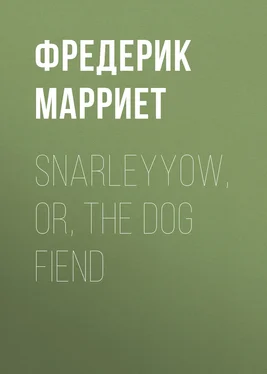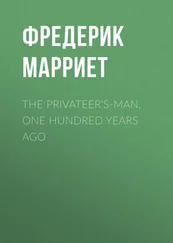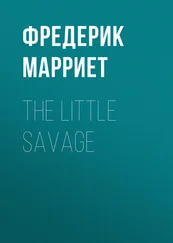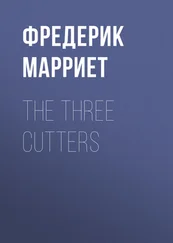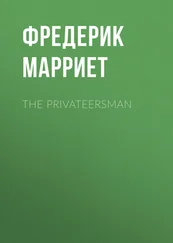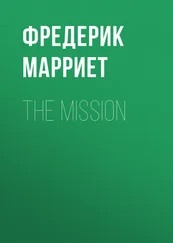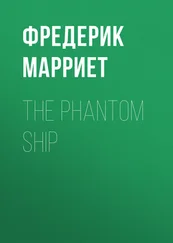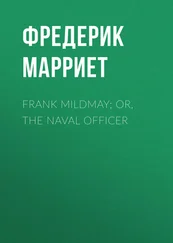Фредерик Марриет - Snarleyyow, or, the Dog Fiend
Здесь есть возможность читать онлайн «Фредерик Марриет - Snarleyyow, or, the Dog Fiend» — ознакомительный отрывок электронной книги совершенно бесплатно, а после прочтения отрывка купить полную версию. В некоторых случаях можно слушать аудио, скачать через торрент в формате fb2 и присутствует краткое содержание. Жанр: Альтернативная история, literature_19, foreign_antique, foreign_prose, Исторические приключения, на английском языке. Описание произведения, (предисловие) а так же отзывы посетителей доступны на портале библиотеки ЛибКат.
- Название:Snarleyyow, or, the Dog Fiend
- Автор:
- Жанр:
- Год:неизвестен
- ISBN:нет данных
- Рейтинг книги:4 / 5. Голосов: 1
-
Избранное:Добавить в избранное
- Отзывы:
-
Ваша оценка:
- 80
- 1
- 2
- 3
- 4
- 5
Snarleyyow, or, the Dog Fiend: краткое содержание, описание и аннотация
Предлагаем к чтению аннотацию, описание, краткое содержание или предисловие (зависит от того, что написал сам автор книги «Snarleyyow, or, the Dog Fiend»). Если вы не нашли необходимую информацию о книге — напишите в комментариях, мы постараемся отыскать её.
Snarleyyow, or, the Dog Fiend — читать онлайн ознакомительный отрывок
Ниже представлен текст книги, разбитый по страницам. Система сохранения места последней прочитанной страницы, позволяет с удобством читать онлайн бесплатно книгу «Snarleyyow, or, the Dog Fiend», без необходимости каждый раз заново искать на чём Вы остановились. Поставьте закладку, и сможете в любой момент перейти на страницу, на которой закончили чтение.
Интервал:
Закладка:
Frederick Marryat
Snarleyyow, or, the Dog Fiend
Prefatory Note
The dog fiend, or Snarleyyow is the earliest of the three novels, The Phantom Ship and The Privateersman being the other two, in which Marryat made use of historical events and attempted to project his characters into the past. The research involved is not profound, but the machinations of Jacobite conspirators provide appropriate material for the construction of an adventure plot and for the exhibition of a singularly despicable villain. Mr Vanslyperken and his acquaintances, male and female, at home and abroad, are all–except perhaps his witch-like mother–thoroughly life-like and convincing: their conduct is sufficiently probable to retain the reader's attention for a rapid and exciting narrative.
The numerous escapes of the vile cur, after whom the novel is christened, and of his natural enemy Peter Smallbones are not all equally well contrived, and they become a little wearisome by repetition; but a general atmosphere of diablerie is very effectively produced by their means. Some such element of unreality is absolutely demanded to relieve the sordid and brutal details by which the main plot is worked out; and it must be admitted that in certain passages–the death-struggle between Smallbones and the lieutenant's mother, the discovery of the woman's body, and the descriptions of kisses between Corporal Van Spitter and the Frau Vandersloosh–Marryat's habitual literalness becomes unpleasantly coarse. The offensive touches, however, are incidental, and the execution of the two villains, Vanslyperken and Snarleyyow, with its dash of genuine pathos, is dramatic and impressive:–"They were damnable in their lives, and in their deaths they were not divided."
As usual the interest of the novel depends almost entirely upon men, but on the character of Mrs Corbett, née Nancy Dawson, Marryat has expended considerable care with satisfactory results. Barring the indecorous habit of regretting her past in public, which is not perhaps untrue to nature, she is made attractive by her wit and sincere repentance, without becoming unnaturally refined. The song in her honour referred to on p. 107 is not suitable for reproduction in this place. She was an historic character in the reign of William III., but must not be confounded with her more celebrated namesake (1730-1767) of Sadler's Wells, Covent Garden, and Drury Lane, who danced a horn-pipe in The Beggar's Opera to the air of "Nancy Dawson," which is mentioned in the epilogue of She Stoops to Conquer , and survives in our nurseries as "Here we go round the Mulberry Bush."
The greater part of Snarleyyow was first printed in The Metropolitan Magazine , 1836 and 1837; but on reaching Chapter xl., just as the novel had appeared in book form, the editor–not then Marryat himself–told his readers that it was not his intention to give an extended review of this work, as they had already "ample means of forming their own opinion of its varied merits:"–"We shall therefore content ourselves with a few remarks, in announcing its publication and giving a brief outline of the termination of the story from our last number." At the close of the said extracts he writes:–
"And so ends Snarleyyow, with as much quaintness, spirit, and character as it commenced."
The book was evidently written in haste, and few of the minor characters retained one Christian name throughout its pages. It is here reprinted, with the corrections of such slips as those just mentioned, from the first edition in three volumes. Henry Colburn, 1837.
R.B.J.
Chapter I
Introduction of divers parties and a red-herring
It was in the month of January, 1699, that a one-masted vessel, with black sides, was running along the coast near Beachy Head, at the rate of about five miles per hour. The wind was from the northward and blew keenly, the vessel was under easy sail, and the water was smooth. It was now broad daylight, and the sun rose clear of clouds and vapour; but he threw out light without heat. The upper parts of the spars, the hammock rails, and the small iron guns which were mounted on the vessel's decks, were covered with a white frost. The man at the helm stood muffled up in a thick pea-jacket and mittens, which made his hands appear as large as his feet. His nose was a pug of an intense bluish red, one tint arising from the present cold, and the other from the preventive checks which he had been so long accustomed to take to drive out such an unpleasant intruder. His grizzled hair waved its locks gently to the wind, and his face was distorted with an immoderate quid of tobacco which protruded his right cheek. This personage was second officer and steersman on board of the vessel, and his name was Obadiah Coble. He had been baptised Obadiah about sixty years before; that is to say if he had been baptised at all. He stood so motionless at the helm, that you might have imagined him to have been frozen there as he stood, were it not that his eyes occasionally wandered from the compass on the binnacle to the bows of the vessel, and that the breath from his mouth, when it was thrown out into the clear frosty air, formed a smoke like to that from the spout of a half-boiling tea-kettle.
The crew belonging to the cutter, for she was a vessel in the service of his Majesty, King William the Third, at this time employed in protecting his Majesty's revenue against the importation of alamodes and lutestrings, were all down below at their breakfasts, with the exception of the steersman and lieutenant-commandant, who now walked the quarter-deck, if so small an extent of plank could be dignified with such a name. He was a Mr Cornelius Vanslyperken, a tall, meagre-looking personage, with very narrow shoulders and very small head. Perfectly straight up and down, protruding in no part, he reminded you of some tall parish pump, with a great knob at its top. His face was gaunt, cheeks hollow, nose and chin showing an affection for each other, and evidently lamenting the gulf between them which prevented their meeting. Both appeared to have fretted themselves to the utmost degree of tenuity from disappointment in love: as for the nose, it had a pearly round tear hanging at its tip, as if it wept. The dress of Mr Vanslyperken was hidden in a great coat, which was very long, and buttoned straight down. This great coat had two pockets on each side, into which its owner's hands were deeply inserted, and so close did his arms lie to his sides, that they appeared nothing more than as would battens nailed to a topsail yard. The only deviation from the perpendicular was from the insertion of a speaking-trumpet under his left arm, at right angles with his body. It had evidently seen much service, was battered, and the clack Japan worn off in most parts of it. As we said before, Mr Vanslyperken walked his quarter-deck. He was in a brown study, yet looked blue. Six strides brought him to the taffrail of the vessel, six more to the bows, such was the length of his tether–and he turned, and turned again.
But there was another personage on the deck, a personage of no small importance, as he was all in all to Mr Vanslyperken, and Mr Vanslyperken was all in all to him; moreover, we may say, that he is the hero of the TAIL. This was one of the ugliest and most ill-conditioned curs which had ever been produced:–ugly in colour; for he was of a dirty yellow, like the paint served out to decorate our men-of-war by his Majesty's dock-yards:–ugly in face; for he had one wall-eye, and was so far under-jawed as to prove that a bull-dog had had something to do with his creation:–ugly in shape; for although larger than a pointer, and strongly built, he was coarse and shambling in his make, with his forelegs bowed out. His ears and tail had never been docked, which was a pity, as the more you curtailed his proportions, the better looking the cur would have been. But his ears, although not cut, were torn to ribbons by the various encounters with dogs on shore, arising from the acidity of his temper. His tail had lost its hair from an inveterate mange, and reminded you of the same appendage to a rat. Many parts of his body were bared from the same disease. He carried his head and tail low, and had a villanous sour look. To the eye of a casual observer, there was not one redeeming quality that would warrant his keep; to those who knew him well, there were a thousand reasons why he should be hanged. He followed his master with the greatest precision and exactitude, walking aft as he walked aft, and walking forward with the same regular motion, turning when his master turned, and moreover, turning in the same direction; and, like his master, he appeared to be not a little nipped with the cold, and, as well as he, in a state of profound meditation. The name of this uncouth animal was very appropriate to his appearance, and to his temper. It was Snarleyyow.
Читать дальшеИнтервал:
Закладка:
Похожие книги на «Snarleyyow, or, the Dog Fiend»
Представляем Вашему вниманию похожие книги на «Snarleyyow, or, the Dog Fiend» списком для выбора. Мы отобрали схожую по названию и смыслу литературу в надежде предоставить читателям больше вариантов отыскать новые, интересные, ещё непрочитанные произведения.
Обсуждение, отзывы о книге «Snarleyyow, or, the Dog Fiend» и просто собственные мнения читателей. Оставьте ваши комментарии, напишите, что Вы думаете о произведении, его смысле или главных героях. Укажите что конкретно понравилось, а что нет, и почему Вы так считаете.
